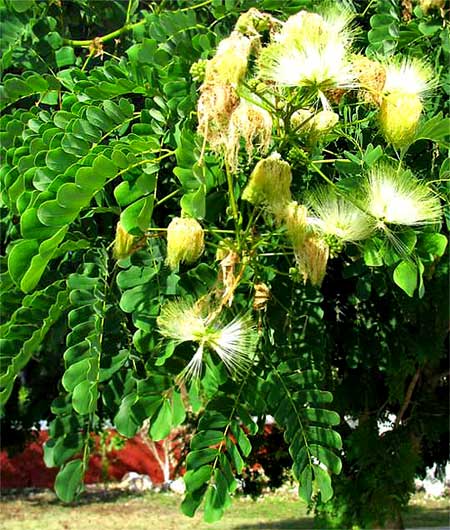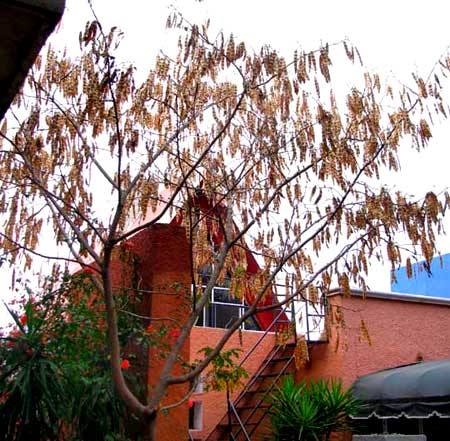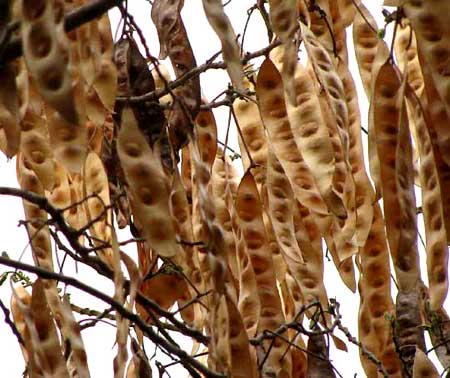
The Lebbeck-Tree, Albizia lebbeck, also a member of the Bean Family, catches our eye during both its flowering and fruiting season. In the late rainy season, in September or so, these good-sized trees issue egg-sized, powder-puff-like clusters of perfumy, greenish-yellow flowers that show up very prettily against the tree's twice-pinnate leaves, as shown below:.

In the flower clusters the slender, fuzzy items are the male parts -- the stamens. Each stamen is tipped by a tiny anther that opens to release pollen. In the picture the stamens in some flower clusters are drooping and turning brown after their blossoms have been pollinated, and the stamens are no longer needed.
Despite the tree's prettiness and the sweet fragrance of its flowers, it's possible that most Northerners mainly notice the tree in the late dry season, in April or so, when leafless Lebbeck-Trees are heavily laden with legume-type fruits, as shown below.

Below, a closer look shows the 10-inch-long (25cm) dry pods with their widely spaced beans inside them clearly visible:

Lebbeck-Trees have been planted along many of Mérida's most used streets. Many drivers on those streets never notice the trees' flowers as they rush by, but late in the dry season when long lines of leafless trees appear, with all those dry, brown legumes clacking against one another in the afternoon wind, more than one person has wondered why such ugly trees were planted. If they'd just see and smell the flowers during the rainy season, they'd know.
Lebbeck-Trees are native to tropical Asia and northern Australia, though they're planted widely throughout the world's tropics. "Lebbeck" is its Arabic name.